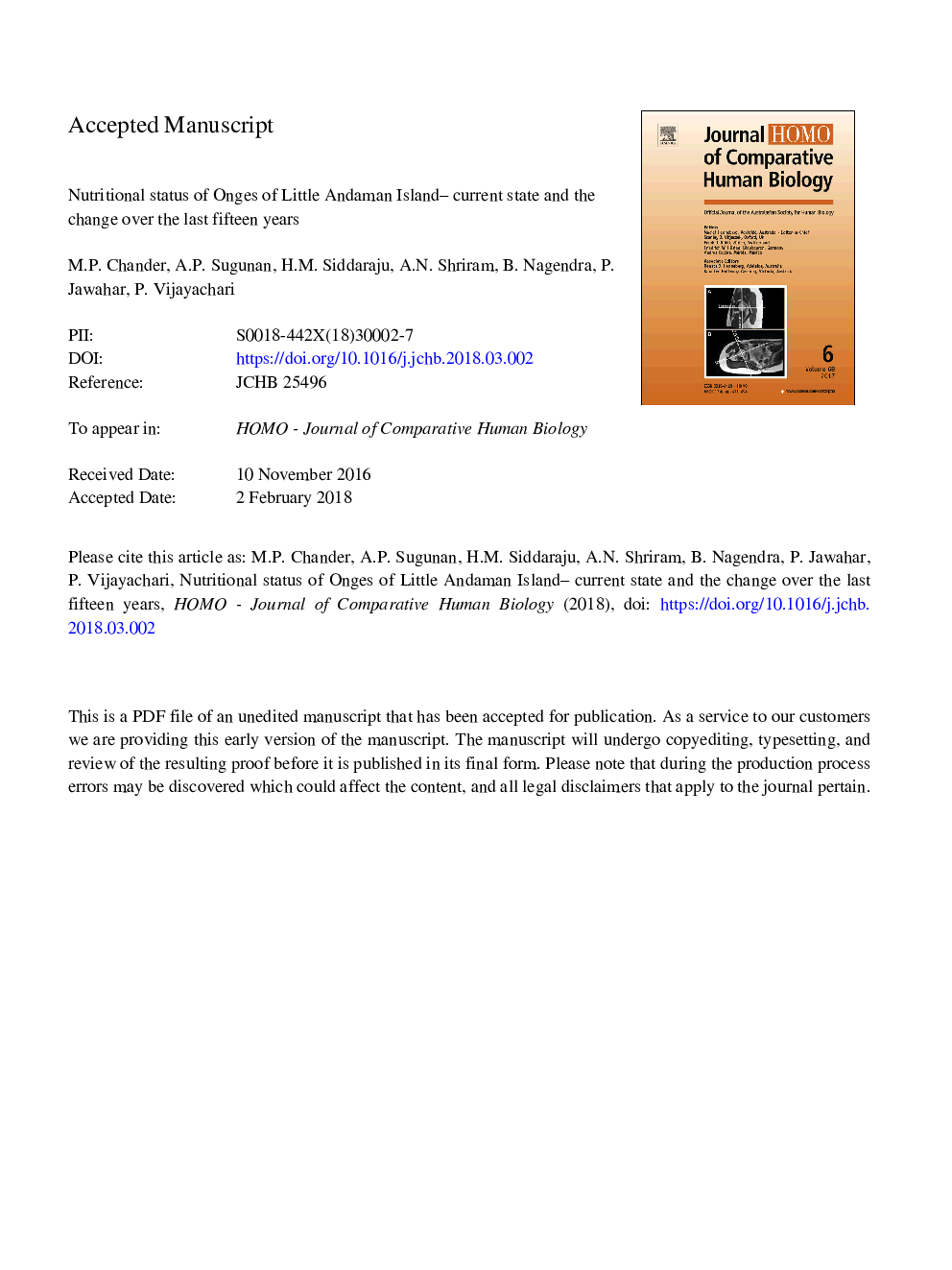| Article ID | Journal | Published Year | Pages | File Type |
|---|---|---|---|---|
| 6554436 | HOMO - Journal of Comparative Human Biology | 2018 | 22 Pages |
Abstract
Onges, an indigenous vulnerable tribe, inhabit the Little Andaman Island. Study undertaken during 1997, recorded high prevalence of undernutrition among children. Subsequently, food rationing was modified by Andaman and Nicobar administration. In the present study, health and nutritional status of this tribe was assessed in 2013 after a gap of 15â¯years. All individuals in the tribe were included. Various health parameters, viz, nutritional anthropometry, haemoglobin level, fasting sugar, lipids and intestinal parasites were investigated. Prevalence of stunted growth and underweight among children of 0-5â¯years was 86.4%. Severe underweight were more prevalent (40%), as compared to those recorded 15â¯years ago (10%), and the difference was statistically significant (Pâ¯<â¯0.05). There has been a substantial improvement in the overall nutritional status of children in the age group ofâ¯<18â¯years. The prevalence of wasting has halved and that of stunting and wasting has come down to one-third of that observed in 1997. Prevalence of anaemia significantly declined from 87% in 1997 to 51% 15â¯years later.
Related Topics
Life Sciences
Agricultural and Biological Sciences
Ecology, Evolution, Behavior and Systematics
Authors
M.P. Chander, A.P. Sugunan, H.M. Siddaraju, A.N. Shriram, B. Nagendra, P. Jawahar, P. Vijayachari,
